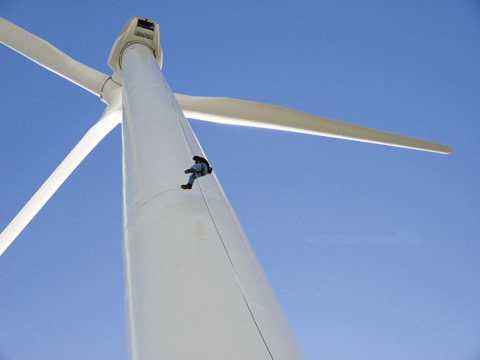The world is currently being plagued by various environmental issues such as global warming, air and water pollution, and deforestation. To combat these issues, we need to shift towards renewable energy sources. One such source is wind energy. Wind turbines have been in use for quite some time now to generate electricity; however, traditional wind turbines come with some shortcomings that hinder their potential to generate sufficient power. The Maglev wind turbine is a significant innovation in this field that overcomes these challenges and offers several benefits over traditional wind turbines.

What is a Maglev Wind Turbine?
Maglev is short for magnetic levitation. Maglev wind turbines use magnetism to levitate and spin, thereby generating electricity. Traditional wind turbines use blades to catch the wind’s energy and spin a rotor, which is connected to a shaft. This shaft, in turn, drives a generator to produce electricity. Maglev wind turbines replace these blades with physically static turbines and employ magnetic levitation and propulsion to rotate them. The turbines float on air-bearings and are driven by magnetic repulsion and attraction forces, which provide a much smoother rotation. This feature of Maglev turbines translates into numerous advantages over conventional wind turbines.
Advantages of Maglev Wind Turbines
1. Higher Efficiency: Maglev turbines work on the principle of air-bearings, which effectively eliminate friction between the moving parts. Traditional wind turbines, on the other hand, rely on bearings that generate friction, leading to losses in energy. Hence, Maglev turbines produce electricity with higher efficiency, translating into more power generation per wind speed.
2. Higher Power Generation: Maglev turbines can generate more power during low wind speeds as compared to traditional turbines. This is because of their higher efficiency and low cut-in speed (the speed at which the turbine starts operating). Moreover, with a lower number of moving parts, Maglev turbines require less maintenance, which saves a lot of money in the long run.
3. Compact and Lightweight: Maglev turbines are smaller and lighter than traditional turbines, making them easier to install and maintain. The compact design also enables them to be installed in areas with space constraints, such as urban environments, where traditional wind turbines would be impractical.
4. Quieter Operations: Maglev turbines do not rely on blades to catch the wind, reducing the amount of noise generated during operation. Thus, they can be installed in residential areas without being a nuisance to the residents.
5. Environmentally Friendly: As with all renewable energy sources, Maglev turbines emit zero greenhouse gases and do not require any harmful chemicals for their production or operation.
Conclusion
Maglev wind turbines offer significant potential for sustainable energy generation. They are highly efficient, compact, lightweight, quiet and environmentally friendly. While they are not yet widely used, research and development in the field has been encouraging, and it is only a matter of time before they become mainstream. In the face of climate change, we need to embrace alternative and innovative energy sources such as the Maglev wind turbine to build a more sustainable future.
Keywords: Maglev Wind Turbine, Renewable Energy, Air-bearings, Higher Efficiency, Higher Power Generation, Compact, Lightweight, Quieter Operations, Environmentally Friendly.